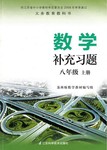��Ŀ����
����Ŀ�����ĸĴ�
�ٶ�Ӣ�������ʦҪ��ͬ��֮�佻�������ģ���������ͬ��д���������ġ����й���10�����Դ���ÿ���������������ÿ��������漰һ�����ʵ����ӡ�ɾ�����ġ�
���ӣ���ȱ�ʴ���һ��©�ַ���(��)������������д���üӵĴʡ�
ɾ�����Ѷ���Ĵ���б��(��)������
�ģ��ڴ��Ĵ��»�һ���ߣ����ڸô�����д���ĺ�Ĵʡ�
ע�⣺1��ÿ���������ľ�����һ�ʣ�
2��ֻ������10��������(�ӵ�11����)���Ʒ֡�
A survey basing on 1,000 students found that half of the pupils and 80% of the middle school students sleeps less than nine hours every night. Too many homework given by school teachers and parents is the main reasons. Another reason lies in students�� bad habits. Some students, for example, are absent-minded while doing his homework, and some waste their after-class time. The third reason is because some students have to get up early on weekdays to get school far away from home. Experts are calling at schools and parents to cut down on the amount of homework but students should make a good use of their time. It would be better if they could choose to study in a nearby school.
���𰸡�
��1��basing---based
��2��sleeps----sleep
��3��many-----much
��4��reasons-----reason
��5��his-----their
��6��because------that
��7��get���to
��8��at---on
��9��and---but
��10��ȥ��make���a
��������
�������: ���Ľ���������Сѧ�����ڵ�����˯�߲�������⣬������ѧ��Ӧ�þͽ���ѧ��
��1��basing---based �����ν�ﶯ�ʡ�����survey��base�Ķ�����������Ӧ�ù�ȥ�ִ��������basing---based��
��2��sleeps----sleep �������ʡ����ݸþ������half of the pupils and 80% of the middle school students�жϲ�Ӧ�õ�����ʽ����sleeps----sleep��
��3��many-----much �������ݴʡ����ݸþ��homework�Dz��������ʣ�Ӧ��much��������many-----much��
��4��reasons-----reason �������ʡ������˾������homework�ж�reasonӦ�õ�����ʽ����reasons-----reason��
��5��his-----their ��������������ǰ�ĵ�students�˴����ݴ�����������Ӧ��their����his-----their��
��6��because------that �������ʡ�����reason���������Ӿ�Ӧ��that��������because------that ��
��7��get���to �������ʡ���������get to��������get���to��
��8��at---on �����������������call on sb to do sth����ij����ij������at---on��
��9��and---but �������ʡ�����ǰ��־�֮���ת�۹�ϵ����and---but��
��10��ȥ��make���a �������ʡ���������make good use of�����������ȥ��make���a��

 ͬ����ϰ���ϴ�ѧ������ϵ�д�
ͬ����ϰ���ϴ�ѧ������ϵ�д� ͬ����ϰ����ʦ����ѧ������ϵ�д�
ͬ����ϰ����ʦ����ѧ������ϵ�д� ����ϰ�⽭��ϵ�д�
����ϰ�⽭��ϵ�д� ѧ���쳵��������������������ϵ�д�
ѧ���쳵��������������������ϵ�д�